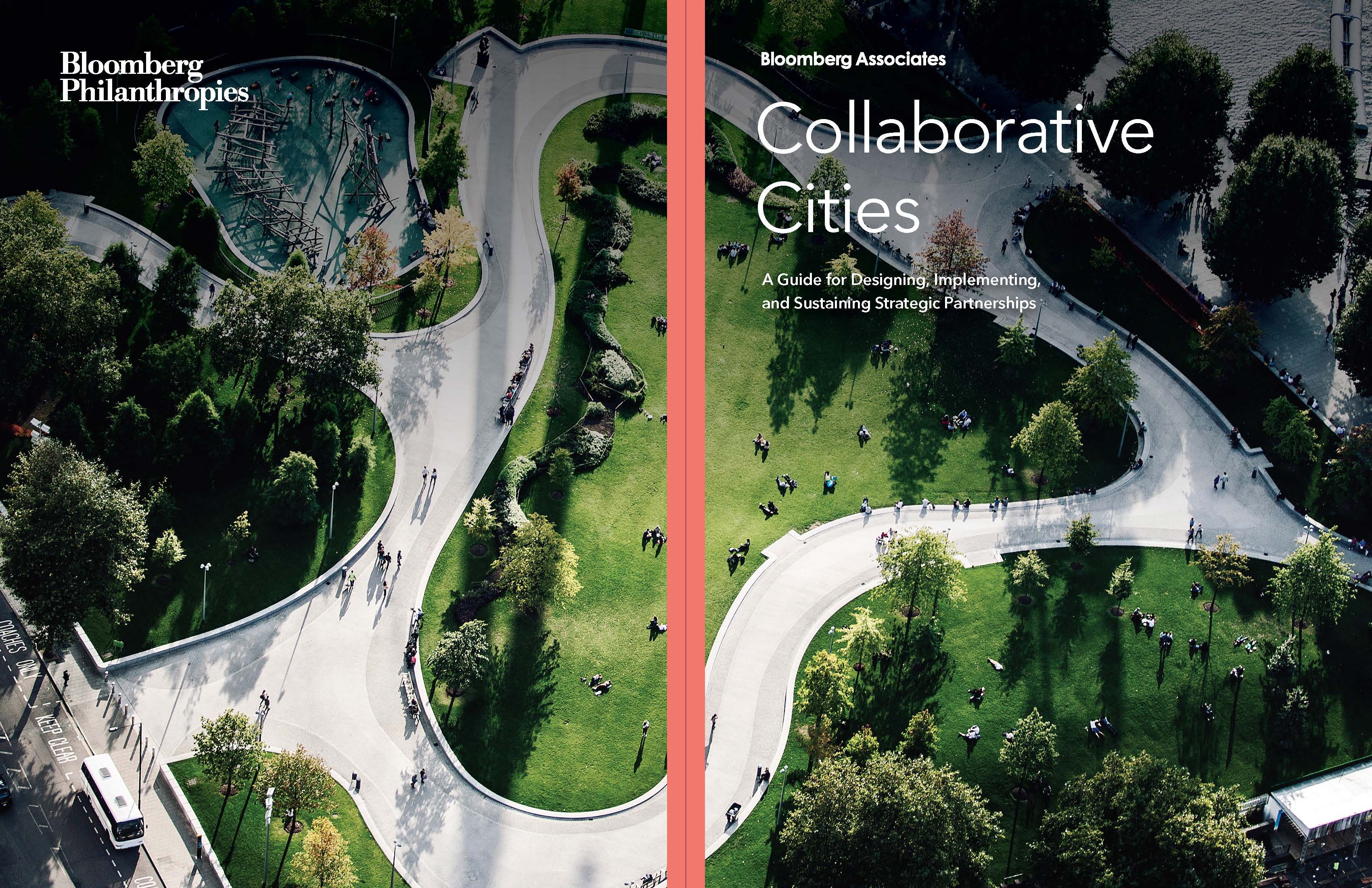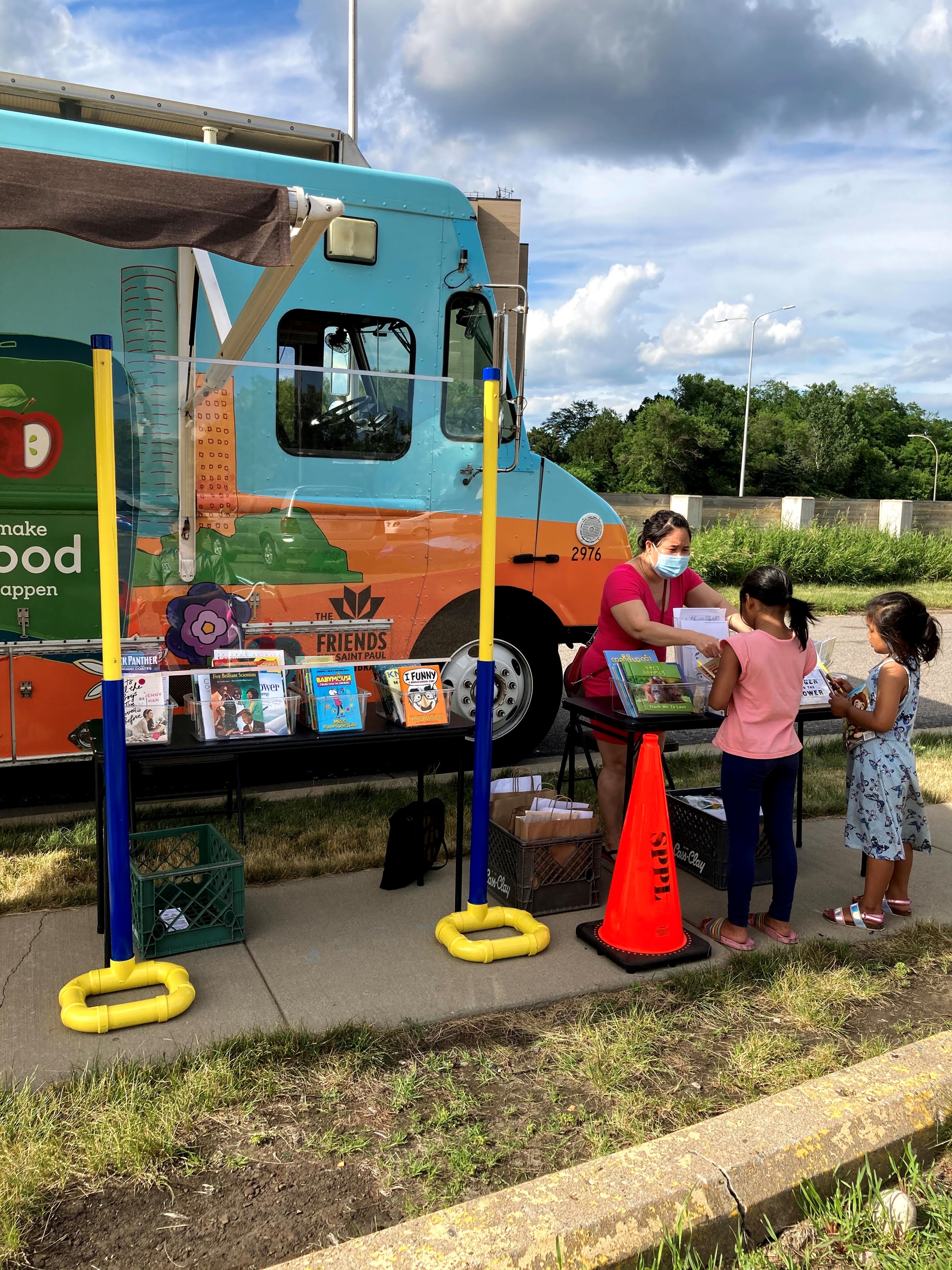Designing & Sustaining Strategic Partnerships: 5 Questions with Megan Sheekey

Across the globe, municipal leaders rely on a network of cross-sector partners to serve their residents and respond to diverse and changing needs in their communities. The COVID-19 pandemic has underscored the need for strong collaboration to marshal new resources, coordinate response efforts, and leverage unique assets across sectors—public, nonprofit, business, and philanthropy.
As part of our work to support local leaders, we published Collaborative Cities: A Guide for Designing, Implementing, and Sustaining Strategic Partnerships, which draws on the partnership experiences of Bloomberg Philanthropies, Bloomberg Associates, city officials, and private sector and nonprofit leaders. The guide highlights many general best practices and lessons that can be applied across municipalities, and offers some guidance on how city leaders can adapt approaches to their own circumstances and challenges.
We spoke with Megan Sheekey, Strategic Partnerships Lead at Bloomberg Associates and former President of the Mayor’s Fund to Advance New York City, to share some thoughts on the role and impact of cross-sector collaboration in cities.
1) What are public-private partnerships, and how were they used in the Bloomberg Administration?
Public-private partnerships are defined differently by government entities and local laws that dictate the work around them, but generally the term is used to describe an initiative between government and other sectors.
Mike Bloomberg has always been a strong believer in the power of collaboration to tackle pressing issues, and cross-sector partnerships were a hallmark of his city Administration in New York. He and First Deputy Mayor Patti Harris (now CEO of Bloomberg Philanthropies) championed the Mayor’s Fund to Advance New York City and other vehicles and efforts to enhance work with philanthropy, nonprofits, and the corporate sector. Project examples include the launch of Green Carts to provide fresh fruits and vegetables in food deserts, the Young Men’s Initiative connecting young Black and Latino men to educational, employment, and other opportunities to tackle disparities, and Hurricane Sandy response and recovery. In many instances, successful partnership pilots during the Bloomberg Administration were integrated into the City’s core services and others were developed into independent organizations with national reach, such as Cities for Financial Empowerment.

The City of Saint Paul, MN teamed up with partners, including Friends of the Saint Paul Public Library, to support residents impacted by COVID-19. Photo credit: City of Saint Paul
2) What are some examples of strategic partnerships local governments have created to respond to the COVID-19 pandemic?
The COVID-19 pandemic has led to an unprecedented level of partnerships across sectors that have helped local leaders respond to the crisis. Strategic partnerships have been essential in responding to targeted needs, such as the acquisition of personal protective equipment for frontline workers, the use of hotels for temporary housing, and the disbursement of cash assistance for residents through debit cards in cities such as Los Angeles.
Many of the most effective interventions to this public health crisis are leveraging the assets of nonprofits and philanthropy. Global foundations like Bloomberg Philanthropies have been working closely with local governments since the start of the pandemic to identify needs, channel resources, and provide technical assistance to support them. For example, Bloomberg’s partnership with New York State, Johns Hopkins Bloomberg School of Public Health, and Vital Strategies’ Resolve to Save Lives to launch a contact training program and free online training program has resulted in more than 870,000 individuals taking the course since it launched in May.
This crisis has also advanced responses to persistent challenges. For example, we’re seeing cities rethink their streets and other public spaces to meet current needs—such as recreation, voting, and more— simultaneously addressing long-standing inequalities in some of the hardest hit areas. Bloomberg Associates’ Janette Sadik-Khan (former Commissioner of the New York City Department of Transportation during the Bloomberg Administration) and NACTO released a guide called Designing Streets for Kids with strategies for cities to encourage better use of streets for children of all ages and abilities.
3) What do businesses stand to gain from strategic partnerships? And why should they consider a philanthropic partnership with local government?
Corporate leaders who I’ve worked with on public-private projects believe that partnering with cities on their priorities is simply good business. All businesses have employees and clients or customers rooted in a place or places where they live and work—and leaders understand the value of strengthening those communities. Having said that, in order to attract private partners and sustain support, local government officials need to ensure that project goals are clearly defined in coordination with all stakeholders and that there’s sufficient management and oversight to administer activities.
4) What are some of the most common questions or challenges you hear when it comes to creating cross-sector partnerships?
I’d say the most common challenge is capacity. Given budget constraints and the high demands on local government, leaders often don’t have (or dedicate) the resources needed to effectively administer partnerships. The biggest question I get is what organizational structure is needed, such as a dedicated fund to manage philanthropic support. I wish there was a one-size-fits-all model but every city is unique. Before moving forward, some first steps should include reviewing the legal and ethical guidelines that govern private partnership in your city, evaluating existing resources and assets that can be leveraged, and ensuring strong engagement and communications with your stakeholders. Municipalities can benefit from having a dedicated staff member (or team) in place to manage partnership efforts and ensure that they are accountable, transparent, and effective.
5) How can partnerships adapt or react to changes in government administrations? What considerations should potential partners plan for?
All government administrations transition and their priorities can shift, so public-private projects should be designed with that in mind. But change is not inherently problematic—new leaders can also bring new ideas and approaches that lend to challenges.
Most importantly, partnership projects should be grounded in community engagement and communications from the start to ensure buy in and build the trust and momentum needed to sustain any efforts. Local champions, such as civic leaders, nonprofit organizations and foundations, can also help to ensure continuity. Ultimately, if public will for the work is strong enough, most partnerships can withstand any political changes.